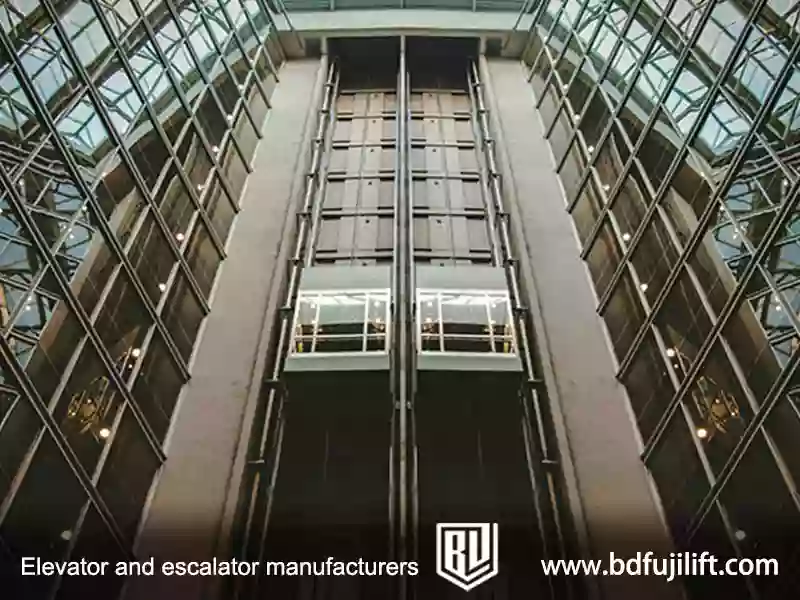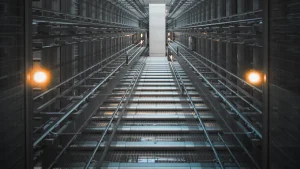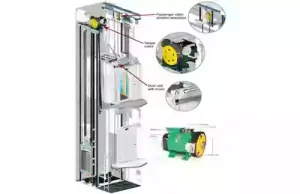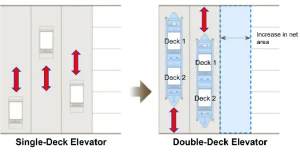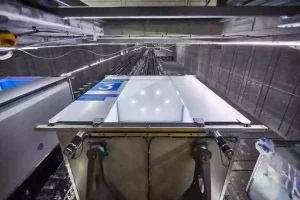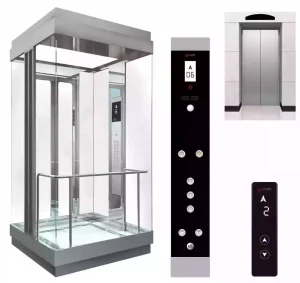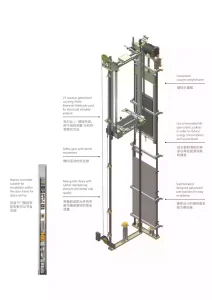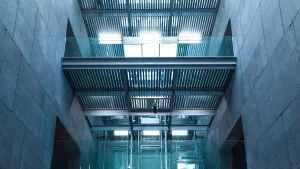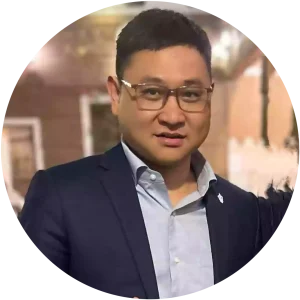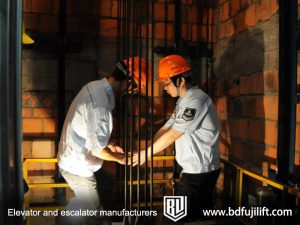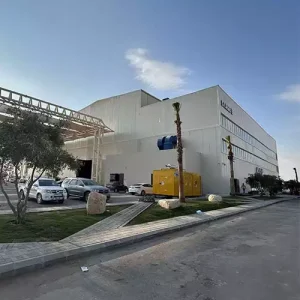Before the invention of elevators, people could not imagine the convenience modern elevators bring. In the past, when building cathedrals or other large structures, the lack of elevators meant that movement between floors could only rely on stairs, which greatly limited the functionality and convenience of the building.
It wasn’t until 1857 that the development of vertical elevators saw a breakthrough. More and more high-rise buildings sprang up, and high-rise elevators became ubiquitous, making the busy and efficient modern society possible.
There are different types of high rise elevators, such as traction elevators, machine-room-less (MRL) elevators, and double-deck elevators. Traction elevators use ropes and motors to carry the car up and down and are common in high-rise buildings. MRL elevators save space by placing the motor inside the shaft. Double-deck elevators have two cabins stacked on top of each other to carry more people at once, helping reduce wait times during busy hours.
If you want to learn more about high rise elevator options for your project, keep reading. This guide will explain how they work, which types are best for tall buildings, how much they cost, and how fast they can go.
What Is a High Rise Elevator?
A high rise elevator is a type of elevator made for tall buildings, like office towers and skyscrapers. These elevators are designed to carry people and goods over many floors. They help save time and make tall buildings easier to use.
High rise elevators use strong motors, steel cables, and control systems to move the car up and down. They stop at many floors, often with smart systems that group people going to similar floors. This makes the ride faster and smoother. High rise elevators are very safe and can work even when the building is very busy.
How Does a High Rise Elevator Work?
High rise elevators work by using strong motors, steel cables, and smart control systems. It all begins with pressing a button inside the building or on the elevator panel. That signal goes to a computer system, which tells the elevator where to go.
Most high rise elevators are traction elevators. These use a motor to move steel ropes that lift and lower the elevator car. A counterweight on the other side helps balance the load. This makes the elevator run faster and smoother, especially in tall buildings.
Modern high rise elevators also use sensors and control software to stop at the right floor and move at the right speed. Some systems group passengers going to similar floors to save time and energy. This keeps the ride safe, fast, and comfortable.
What Types of Elevators Are Used in High-Rise Buildings?
Most high rise elevators use special systems that are different from regular home elevators. They must be stronger, faster, and safer. Each type of high rise elevator is made for a certain job, and engineers choose based on the building’s size, shape, and use.
Here are some of the most common types of high rise elevators:
1. Traction Elevators
Traction elevators are the most popular choice for high-rise buildings. They use ropes and counterweights to lift the elevator car. A motor moves the ropes, and the counterweight helps balance the load.
These elevators are smooth and fast. Some have gearless motors, which are even quicker and work better in very tall towers. Traction elevators are used in hotels, office towers, and apartment buildings.
2. Double-Deck Elevators
Double-deck elevators have two cars stacked on top of each other. This means they can stop at two floors at once. The top car stops at even-numbered floors, and the bottom car stops at odd-numbered ones.
This system helps reduce wait times during rush hours. It’s great for tall buildings where many people move between floors at the same time.
3. Express Elevators
Express elevators skip many floors and go straight to the top or a sky lobby. People can then change to local elevators that serve nearby floors.
This saves time and keeps the main elevator from stopping too often. Express elevators are common in skyscrapers and large office buildings.
4. Observation Elevators
Observation elevators are usually placed on the outside of a building and have glass walls. They offer great views while moving between floors.
Though they are slower, they add beauty and are often used in hotels, shopping centers, and tourist towers.
5. Machine Room-Less (MRL) Elevators
MRL elevators don’t need a big machine room on top of the building. Instead, the motor is placed inside the elevator shaft.
This saves space and makes the building design easier. MRL elevators are used more often in mid to high-rise buildings that want to save floor space.
How Much Do High Rise Elevators Cost?
The cost of high rise elevators can be calculated by the type of elevator, the number of floors, and the features you need.
Basic Price Range:
For a simple high rise elevator in a mid-sized building, the cost can start around $75,000 to $150,000. This usually includes the elevator car, rails, cables, and motor system.
Advanced Systems:
More advanced high rise elevators—like double-deck or express elevators—can cost $200,000 to $500,000 or more. These are often used in very tall buildings and come with faster speeds, smart controls, and energy-saving features.
Other Cost Factors:
Several things can affect the final price:
- Number of floors: More floors mean more stops, longer cables, and more powerful motors.
- Speed: Faster elevators need better technology and stronger systems.
- Design: Glass walls, special lighting, or custom interiors can add to the cost.
- Building needs: Tight spaces or extra safety rules may need special designs.
To get the most accurate cost, it’s best to talk with a high rise elevator supplier. They can look at your building and tell you what fits best and how much it will cost.
Conclusion
High rise elevators are important for making tall buildings safe, fast, and easy to use. Their price depends on many things, like the type of elevator, how high the building is, how fast the elevator needs to go, and what design features are added.
To choose the right elevator, it’s important to look at your building’s size, how many people will use it, and your budget. Some elevators are better for speed, others save space or energy.
Since high rise elevator systems can be complex, it’s best to talk with an experienced outdoor elevator supplier. They can help you find the right solution that fits your needs and gives the best value.
High Rise Elevator FAQ
How many floors count as a high rise?
A high rise is typically a building with 10 or more floors. However, this can vary by region or building type. In some areas, buildings with 5–7 floors may also be considered high rises. These buildings require special elevators for efficient vertical transportation.
How fast are high rise elevators?
High rise elevators are designed for speed to minimize wait times. Their speed can vary depending on the building height. On average, they travel at 2 to 10 meters per second, with taller buildings often having faster elevators to accommodate high traffic efficiently.
How much does it cost to install an elevator in a high rise building?
The cost of installing an elevator in a high rise depends on factors like the building’s height, elevator type, and custom features. On average, installation costs range from $75,000 to $500,000. High-end systems, such as express elevators, can cost even more.


